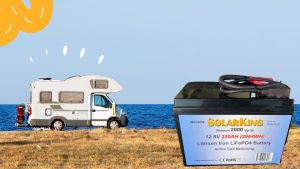There is a chill in the air, signaling that it is time to do the essential winter maintenance work before storms arrive in force. Winter preventative maintenance involves safeguarding against bursting pipes, deteriorating fixtures, fading plants, and trip hazards for your renters. To avoid wintertime damage this year, consider looking at the most crucial winter maintenance activities.
Things you should do before winter
You will need to start property maintenance before winter. There are a few important things that you will need to do before the winter season begins. You are still not too late to start focusing on them.
– Prepare all the pipes for winter
Uninsulated pipes need to be covered to prevent freezing or rupture during cold weather. Remind your renters to sever garden hoses and cover outside spigots with insulation. If the temperature falls below 20 degrees, advise your renters to take extra safety measures. Give them instructions on how to prevent the pipe from freezing by keeping one or two faucets flowing slowly at all times. Tell the renters to leave the kitchen sink cabinet door open so warm air may circulate around the pipes.
– Do a risk analysis
Roofs are severely damaged by ice, rain, snow, wind, quickly changing temperatures, and humidity. Look for any loose or missing shingles. A small roof damage might result in water exposure, which weakens drywall, insulation, and wood, leaving electrical, plumbing, and HVAC systems exposed. Repairs should be handled proactively in the autumn rather than finding a leaking roof after a winter storm. A competent, trained roofing specialist should inspect your roof yearly due to how important it is.
– Take a look at the gutters
Clean out all the downspouts and gutters all over the property as the leaves begin to fall. A clean gutter will guide water away from the house and avoid water damage towards the foundation or building. Clogged gutters may produce ice dams in cold weather that can lead gutters to completely break. It is essential to do preventative maintenance before fall to safeguard your investment against storms.
– Focus on caulking
One of the most affordable maintenance tasks is caulking and sealing holes. Water may enter thebuilding via fractures and freeze, causing water damage and mold growth.
– Take a look at the attic
To avoid ice damming on the roof, which may result in damage and costly repairs, check the insulation in your attic. Unwanted animals may damage insulation, which has to be fixed before the winter cold makes it worse.
– Pet proof the house
Animals seek comfort in an accessible basement as well as attic when the weather is cold. Caulk minor holes and hardware cloth big ones to stop an infestation.
It is a good idea to focus on caulking for minor holes, stapling or screwing hardware cloth over bigger holes, or making long-term repairs when it comes to animal proofing your property. For tougher animals like raccoons, such as bug screens, it is advised to use 16 gauge 1 x 1 inch steel mesh. Solid metal flashing is the best exclusion material for squirrels.
– Examine fall hazards
Autumn is characterized by low temperatures and frequent rain. Check your deck, patio, and entryway supports and railings. Ensure that anybody who could slide on a wet area can be supported by the railings.
– Perform outdoor checks
In order to avoid more damage, look for simple maintenance problems such spots that need caulk, drains that need dirt cleared, or flora that needs to be trimmed. Look for any missing or loose shingles on the roof. The idea is to address minor concerns before they grow into costly ones.
Things you should do during winter
Now you are aware of the things that you should do before winter. Similarly, there are a few important things that you will need to do during winter as well. Continue to read and you will figure them out.
– Care for your roof
If you haven’t had your roof inspected by a licensed roofing specialist this year, this is the time. It is vital to inspect for any damage, no matter how little, since this might result in water exposure and degradation, leaving your HVAC, electrical, as well as plumbing systems exposed. Before your renters use the fireplace, examine the chimney while you’re nearby to make sure it’s in good condition.
– Weatherproof all doors and windows
Don’t forget to weatherproof your doors and windows to keep out the winter cold. This guarantees your renters’ contentment and prevents your heating system from being overworked while also keeping out harmful moisture. It also keeps your tenants’ heating expenditures down.
– Clean all debris and prune trees
Pruning your vegetation now will safeguard it from inclement weather and secure the safety of your renters. Instable branches may get burdened by heavy snow and ice, which may cause hazardous breakages that might hurt people or block roads. Before the cold weather really sets in, inspect your yard for just any trees or bushes in need of trimming, and make sure the paths are free of any slick mulching leaves.
Clearing the guttering once more may help you avoid harm from water collecting against your siding or roof. Winds from autumn have carried leaves and trash that have to be cleaned up.
– Flush the water heater
To avoid mineral buildups that might harm the water heater or prevent efficiency, experts suggest flushing it at least once every two years. An outdated water heater will require special care; make plans to arrange a repair or replacement, when needed.
Final words
While doing routine maintenance might not be the most fun item on the to-do list, savvy managers seize the chance to safeguard their finances in the long term. Small repairs today may easily prevent future problems that might cost hundreds or even thousands of dollars. Property managers and landlords are responsible for making sure the premises are livable. Seasonal upkeep and annual safety inspections can keep your margins healthy, and your renters satisfied.







